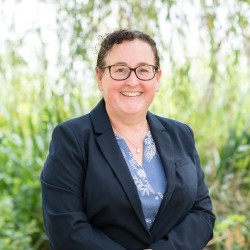
Dr Alison Taylor
Publications
Academic and mathematical skills development is built into the curriculum in all modules on the Engineering and Physical Sciences Foundation Year programme at a university in England, with all teaching team members involved including our Lecturer in Learning Development. Two specific academic support initiatives are outlined in this paper to provide a small-scale case study of approaches to developing learning communities. The first is a ‘Peer-Assisted Learning Scheme’ which involves the mentoring of groups of students by a previous Foundation Year student. The second is the ‘Engineering Business Case’ involving a group design project with a financial incentive supported by the Engineers in Business competition. In both cases, the student voice, through the lens of creating communities of learning, was sought through questionnaires. There are indications that both mentees and mentors reported benefits in terms of learning and development and engaging with other students in their participation with the Peer-Assisted Learning Scheme. For the Engineering Business Case a contrasting view was seen: whilst the students agree that components of this project were valuable for their learning and/or future studies, meeting new people, and developing strategies for group work, there were mixed responses about whether the project helped them to feel part of the student community. The data evaluated in this work do not lend themselves to any generalisations. Rather, we seek to report on the framework and implementation of these schemes which, as they mature, will lend themselves to more quantitative and qualitative data collection for interpretation.
This paper discusses the establishment of two new foundation year programmes at the University of Surrey; one in the Faculty of Engineering and Physical Sciences and the other in the Faculty of Arts and Social Sciences. Specifically, it explores how the programmes have been constructed and how programme teams have attempted to avoid the ‘deficit model’ by adopting a student-centred approach that focuses on the development of successful students when considering staffing expertise and curriculum design. This is followed by an exploration of staff and student perspectives on what constitutes a successful foundation year student. Finally, the paper comments on how success will be measured in the future, suggesting that, whilst specific metrics might serve as indicators of success, no single metric is likely to capture the complicated nature of what success is and what it looks like for the individuals we teach. Overall, the paper suggests that the question, ‘What is a successful foundation year student?’ should be considered carefully in the process of designing and developing foundation year programmes.
In this work, we present a simple and affordable experiment to determine the Reynolds number for water flowing through a cylindrical aperture. Commercially available equipment exists but often at high cost. Instead, the use of simple laboratory equipment (stopwatches, measuring cylinders and plastic bottles) allows an entire class to complete the experiment simultaneously. By measuring the mean bulk flow rates and calculating a value for the mean bulk speed of the fluid the Reynolds number (Re) can be determined. Using this experimental equipment we observed both laminar and turbulent flow, as confirmed through our calculated values of Re = 1100 300 and Re = 9400 700 respectively. Finally, we offer practical advice for carrying out these experiments as well as suggesting suitable further activities to make this activity accessible to various levels of study.
The adhesion of photocured resins to ceramic substrates has been investigated using a variety of surface analytical techniques. Work has been aimed at establishing the physical and chemical interactions between resin and substrate in the interphase region and the effect of environmental exposure on these Analysis was aided by use of specially-designed, in-situ fracture facilities attached by an X-ray photoelectron spectrometer. Specific attention was focused on identification of localised regions of varying chemical composition in adhesive and adherend by imaging spectroscopies (imaging XPS and ToF SIMS imaging) and the study of the significance of such heterogeneities on adhesion and subsequent failure mechanisms.
The use of X-ray photoelectron spectroscopy (XPS) to assess the locus of failure of a photo-cured resin on an alumina substrate is reported. It is shown that the carbon 1s spectra obtained with conventional (achromatic) and monochromatic photon sources are markedly different. The spectrum obtained with the monochromatic source reveals the fine structure associated with the polymer whilst the spectrum recorded with the conventional source is distorted by differential charging. This observation has important ramifications when XPS is used for the definition of the locus of failure of organic coatings, or adhesives, applied to insulating substrates such as ceramics.
The formation of an interphase zone at the junction between an organic system, such as an adhesive or coating, and an inorganic substrate is considered. Drawing on experimental work for a fully-formulated photocured resin and theoretical models for a simple homopolymer it is shown that such a feature may be the result of preferential adsorption (for a multicomponent system) or conformational changes in the case of a homopolymer. Guidelines for the recognition, cause and prediction of such layers are provided, and their possible effects on the strength and durability of the organic/inorganic couple are discussed. It is suggested that the consideration of these phenomena at the design stage of a new resin may provide a route to optimise hydrolytic stability. The behaviour of an interphase zone of this type as a weak boundary layer is also considered.
The surface properties of a commercially available photocured resin were investigated using a combination of inverse gas chromatography (IGC) and X-ray photoelectron spectroscopy (XPS). Results were compared with those obtained from a sample of a modified resin, in which one of the components was removed from the formulation, and poly(methyl methacrylate). IGC results indicated that modification of the resin produced differences in the acid-base properties of the material, with the modified resin behaving in a less basic manner. XPS data revealed very little difference between the two resins.